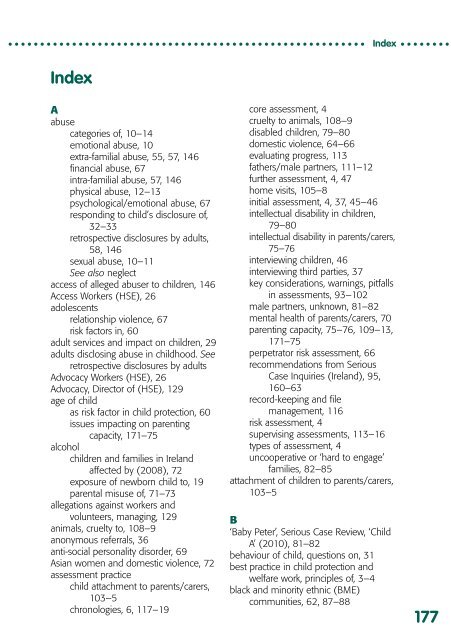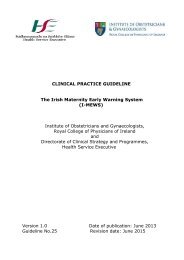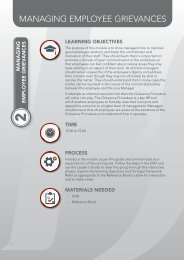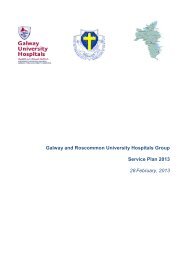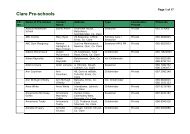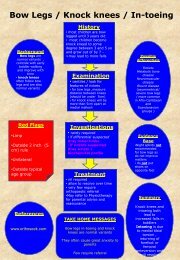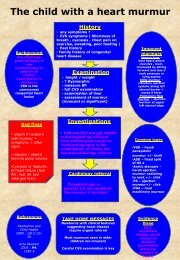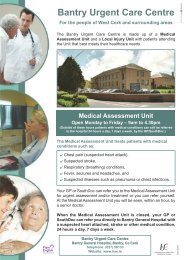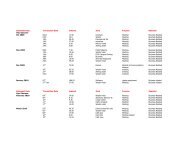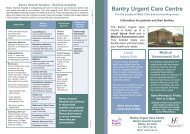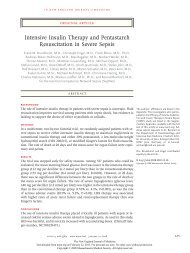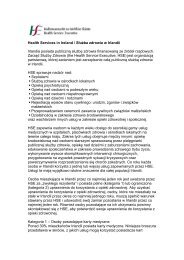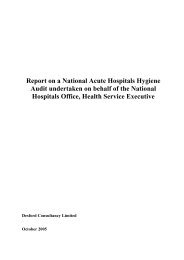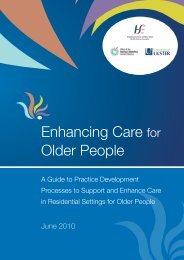Child Protection and Welfare Practice Handbook - Health Service ...
Child Protection and Welfare Practice Handbook - Health Service ...
Child Protection and Welfare Practice Handbook - Health Service ...
Create successful ePaper yourself
Turn your PDF publications into a flip-book with our unique Google optimized e-Paper software.
Index<br />
A<br />
abuse<br />
categories of, 10–14<br />
emotional abuse, 10<br />
extra-familial abuse, 55, 57, 146<br />
financial abuse, 67<br />
intra-familial abuse, 57, 146<br />
physical abuse, 12–13<br />
psychological/emotional abuse, 67<br />
responding to child’s disclosure of,<br />
32–33<br />
retrospective disclosures by adults,<br />
58, 146<br />
sexual abuse, 10–11<br />
See also neglect<br />
access of alleged abuser to children, 146<br />
Access Workers (HSE), 26<br />
adolescents<br />
relationship violence, 67<br />
risk factors in, 60<br />
adult services <strong>and</strong> impact on children, 29<br />
adults disclosing abuse in childhood. See<br />
retrospective disclosures by adults<br />
Advocacy Workers (HSE), 26<br />
Advocacy, Director of (HSE), 129<br />
age of child<br />
as risk factor in child protection, 60<br />
issues impacting on parenting<br />
capacity, 171–75<br />
alcohol<br />
children <strong>and</strong> families in Irel<strong>and</strong><br />
affected by (2008), 72<br />
exposure of newborn child to, 19<br />
parental misuse of, 71–73<br />
allegations against workers <strong>and</strong><br />
volunteers, managing, 129<br />
animals, cruelty to, 108–9<br />
anonymous referrals, 36<br />
anti-social personality disorder, 69<br />
Asian women <strong>and</strong> domestic violence, 72<br />
assessment practice<br />
child attachment to parents/carers,<br />
103–5<br />
chronologies, 6, 117–19<br />
Index<br />
core assessment, 4<br />
cruelty to animals, 108–9<br />
disabled children, 79–80<br />
domestic violence, 64–66<br />
evaluating progress, 113<br />
fathers/male partners, 111–12<br />
further assessment, 4, 47<br />
home visits, 105–8<br />
initial assessment, 4, 37, 45–46<br />
intellectual disability in children,<br />
79–80<br />
intellectual disability in parents/carers,<br />
75–76<br />
interviewing children, 46<br />
interviewing third parties, 37<br />
key considerations, warnings, pitfalls<br />
in assessments, 93–102<br />
male partners, unknown, 81–82<br />
mental health of parents/carers, 70<br />
parenting capacity, 75–76, 109–13,<br />
171–75<br />
perpetrator risk assessment, 66<br />
recommendations from Serious<br />
Case Inquiries (Irel<strong>and</strong>), 95,<br />
160–63<br />
record-keeping <strong>and</strong> file<br />
management, 116<br />
risk assessment, 4<br />
supervising assessments, 113–16<br />
types of assessment, 4<br />
uncooperative or ‘hard to engage’<br />
families, 82–85<br />
attachment of children to parents/carers,<br />
103–5<br />
B<br />
‘Baby Peter’, Serious Case Review, ‘<strong>Child</strong><br />
A’ (2010), 81–82<br />
behaviour of child, questions on, 31<br />
best practice in child protection <strong>and</strong><br />
welfare work, principles of, 3–4<br />
black <strong>and</strong> minority ethnic (BME)<br />
communities, 62, 87–88<br />
177


